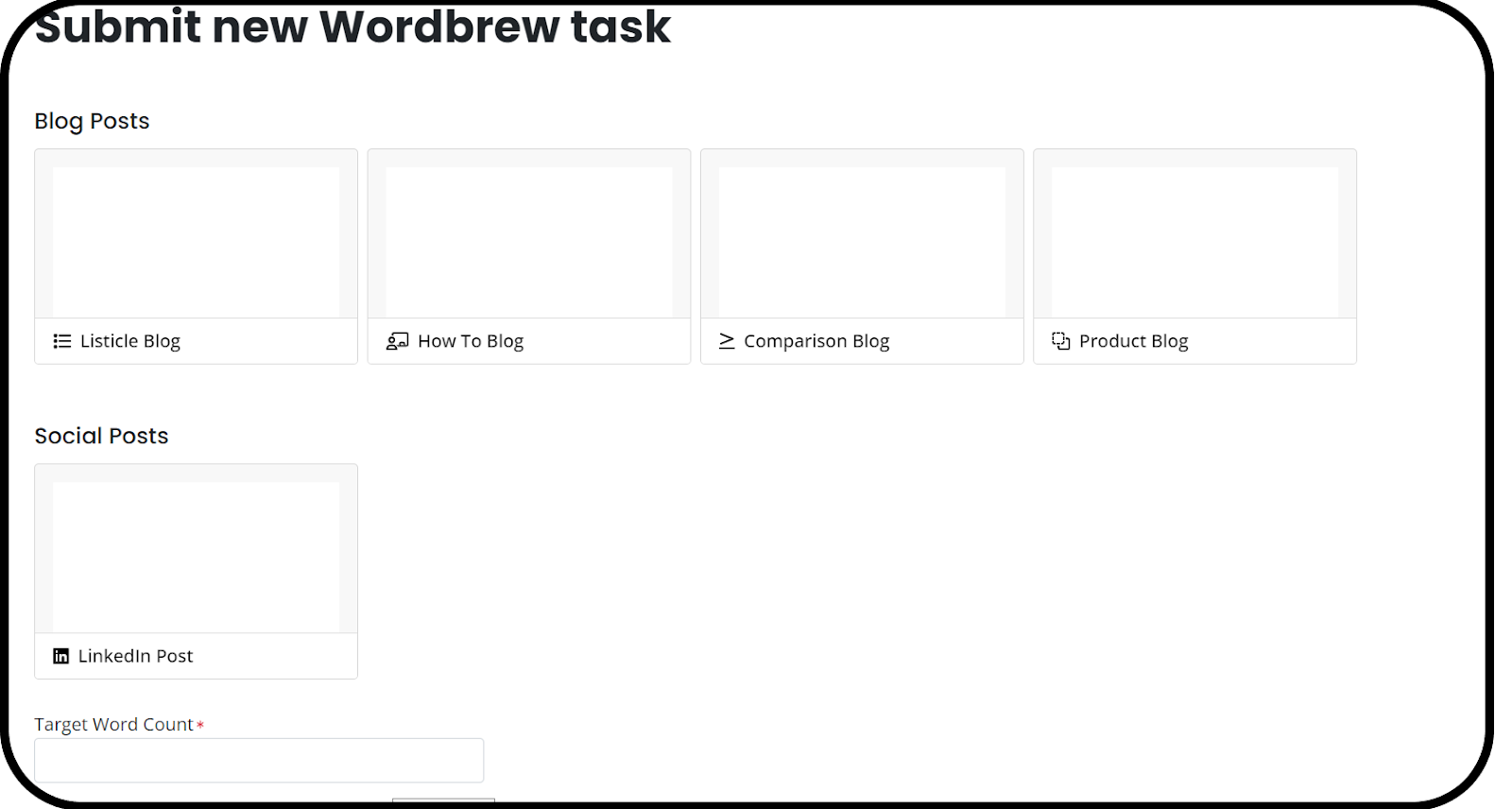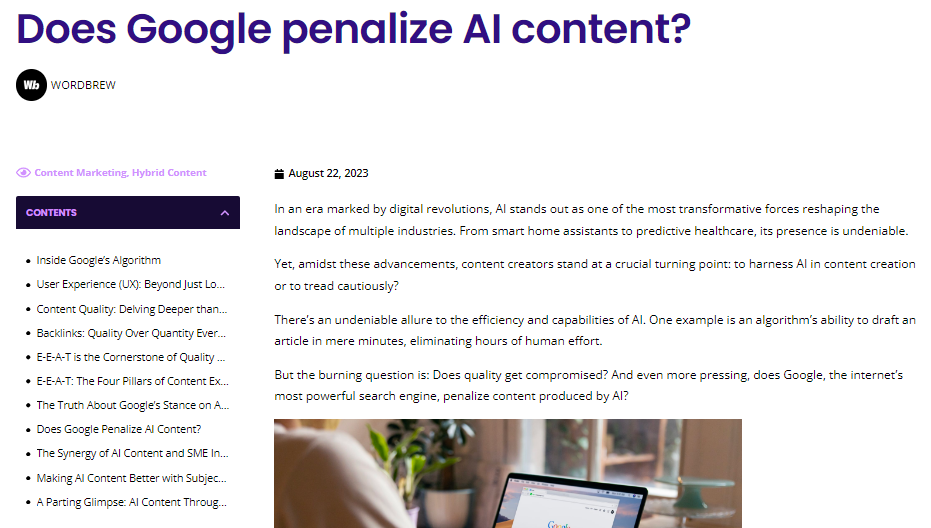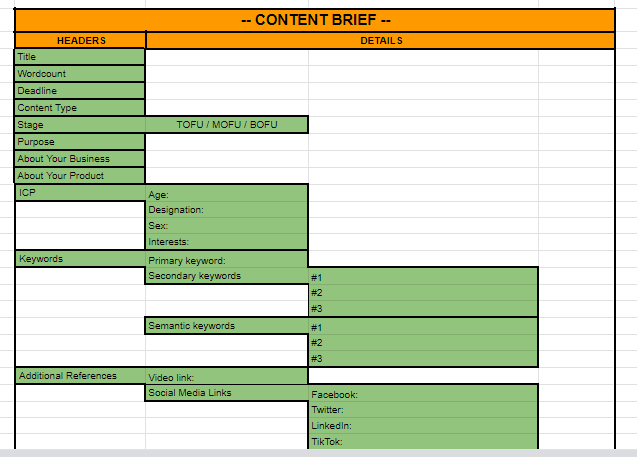Table of Contents
- Home
- »
- Content Marketing
- »
- Write helpful how-to articles in 6 easy steps
-
Muhammad Umer
- 8 minutes read time
Write helpful how-to articles in 6 easy steps
- Home
- »
- Content Marketing
- »
- Write helpful how-to articles in 6 easy steps
Write helpful how-to articles in 6 easy steps
Table of Contents

Writing a “How-to” article effectively bridges the gap between expertise and the reader’s curiosity. These pieces aim to present a clear, step-by-step guide that empowers the reader.
The six steps in this how-to article will ironically prepare you to write how-to pieces more clearly and purposefully. The resulting content will resonate with your audience, teach them what they need to know, and help them achieve their desired outcomes.
Let’s get started right away!
TL;DR
- Choose a subject you know about.
- Dive deep into your audience’s needs, search intents, and challenges.
- Provide alternative methods and list necessary materials upfront.
- Use clear, actionable language.
- Summarize key points.
- Proofread and optimize for SEO.
How to write a helpful how-to article in 6 easy steps
Before writing a helpful how-to article, you need a well-chosen topic. It should be something you’re experienced in and what your audience seeks. Once you have that, construct a clear, logical outline that maps out each step of the process. Sounds easy, right?
While crafting steps, prioritize clarity and simplicity in your language for easy understanding. You can also use visuals and examples to make your point. This will enable you to create an engaging and informative how-to article.

Let’s show you how to create an effective how-to article from scratch.
1. Select a topic
Selecting a topic is the foundational step in creating a how-to article. To ensure relevance and expertise, pick a subject you’re well-versed in. This will add authority to your article and make the writing process smoother since you’ll draw content from your knowledge and experience.

Incorporating keyword research is crucial in this selection process. It involves identifying terms your audience is searching for and incorporating them into your writing. Use SEO tools like Ahrefs or Semrush to help pinpoint valuable keywords.
Lastly, analyze your audience to understand who your readers are, the challenges they face, and the solutions they seek. You can do this by engaging with them directly through surveys, social media, or through communities like Reddit and LinkedIn. This approach will reveal their challenges and the solutions they’re seeking, helping you tailor your content effectively.
Look at this Reddit thread, for instance. It’s about the challenges people face in their SaaS:

Threads in communities like these will help you choose a relevant topic. This step ensures that the guidance you offer is not just heard but also valued and implemented.
2. Understand your audience
Understanding your audience is critical in crafting an engaging how-to article. It requires empathy and insight to truly step into your readers’ shoes.
Start by considering their needs.
What are they trying to achieve by reading your article? What problems are they looking to solve? This understanding shapes useful content.
Search intent is equally vital.
Why is your audience turning to a search engine for this information? What specific terms are they using, and what does that say about their level of expertise?
Aligning your article with these intents ensures that it fulfills the reader’s immediate concerns, providing a solution right when it’s most needed.
For example, lately, there has been a lot of talk about how Google might penalize AI-driven or hybrid content. This PAA tree says it all.

We found the same question being asked over and over again on different platforms online. So, we addressed it in one of our blogs:

Blending a deep understanding of your audience’s challenges with their search behaviors will enable you to create favored content that is easy to find online. This approach serves the reader and solidifies your role as a reliable source of information and guidance.
3. Create an outline
Creating an outline is yet another pivotal step in writing a how-to article. It serves as the blueprint for your content, ensuring that each instructional element is presented logically and coherently.
Begin by listing the steps the reader must take and organize them in the sequence in which they should be executed. This clarity in structure is not just a courtesy; it’s a roadmap that easily guides the reader through your content.
As you develop your outline, think about the process from start to finish. What must the reader know first? What details are necessary for success in subsequent steps? Divide content into H2s and H3s to help readers understand each step in detail.
This foresight prevents confusion and builds reader confidence. An effective outline anticipates and addresses questions before they arise, creating a seamless learning experience for the reader.
A robust outline prepares the way for an article that informs and empowers the reader to take action.
It’s important to note here that a content outline differs from a content brief. An outline, in simple terms, provides an article’s flow, while a brief offers background information like target audiences, keywords to incorporate, research documents, etc.

4. Detail each step
Detailing each step is the crux of your how-to article.
Start your how-to blog by expanding on the points in your outline, providing thorough explanations that leave no room for ambiguity.
Your knowledge should translate into comprehensive yet easily digestible information for the reader. This might include explaining why certain steps are necessary and what risks or common mistakes to avoid.
Offer multiple methods when appropriate.
There is rarely a one-size-fits-all solution, so presenting alternative approaches can make your content more inclusive and practical. This consideration reflects an understanding that readers come from diverse backgrounds and have access to different resources.
Pay close attention to details.
List everything needed before the start. For example, if you’re writing a blog on “How to prepare a cheesecake,” you should start by listing the ingredients that will be required to prepare it.

Source: King Arthur Baking
This preempts reader frustration by ensuring they are fully prepared before they dive into the steps. An incomplete list can interrupt the flow of action and lead to a negative experience.
Make the content actionable by using a direct tone (think active voice). Use clear, imperative language that instructs the reader confidently.
For instance, “Apply the coating evenly” is more direct and helpful than “You should apply the coating evenly.” The former communicates the action clearly, encouraging the reader to proceed with certainty.
Visual aids, like images and videos, can significantly enhance understanding. They break long text blocks, illustrate complex steps, and can often convey information more effectively than words alone.
When integrating visuals, ensure they are high quality and directly relevant to the accompanying text.

Source: wikiHow
Let’s recap:
- Elaborate on each point of your outline with full explanations.
- Provide alternative methods for completing a step where possible.
- List all necessary materials upfront to prepare the reader.
- Employ a direct tone for clear, actionable content.
- Enhance steps with relevant images or videos for better comprehension.
Follow these details, and you’ll end up creating a highly engaging how-to article.
5. End on a strong note
A compelling conclusion reiterates essential steps and main points for more clarity.
Imagine reminding your readers in a baking article to preheat the oven first—a small but crucial step. It’s also a chance to impart final tips, like a chef suggesting a pinch of salt to enhance flavors or cautioning against common errors.
Encourage reader interaction by prompting them to share their baking results or explore more recipes. Conclude with motivating words focusing on the ease of the task.
Remember: Your conclusion isn’t just an end—it’s a springboard for the reader’s journey.
6. Prepare for publishing
Preparing your article for publishing requires a keen eye for detail and an understanding of readers’ engagement.
Begin with proofreading, a critical step to guarantee clarity and professionalism. Check for grammatical errors, readability, and coherence in your arguments. A well-edited article reflects the quality and reliability of the content and its creator.
Choosing a headline is arguably one of the most crucial aspects of your article. Your headline should capture the essence of the content while enticing the reader to dive in.
Employ strategies that include numbers, clear benefits, or direct questions that resonate with your target audience’s search queries.

Make sure that you link to related content since it is a strategic SEO practice that will give your article an additional push online.
Adding internal links to other articles on your website is great for your content strategy. They boost search engine visibility to keep readers engaged for longer periods. Internal links also showcase the breadth of your knowledge and resources, positioning you as an authority in your field.
Before hitting publish, consider SEO elements that will make your article more discoverable. Use relevant keywords throughout, ensuring they fit naturally into the text.
Meta descriptions, alt text for images, and structured data can also improve how search engines index and display your content.

Why do you need how to articles?
How-to articles serve a dual purpose:
- They empower readers with the knowledge to accomplish tasks.
- They establish the writer (and your brand) as a trusted authority.
People need step-by-step guidance in everyday life. No matter who your target audience is, individuals will always be trying to overcome challenges or achieve something they’re not experienced in. For this, how-to articles offer tangible value that readers can apply to their lives immediately.
Moreover, how-to articles enhance user engagement. They encourage readers to spend more time on your website, increasing the likelihood of conversion. By providing clear instructions, you’re helping readers solve a problem and building a relationship with them.
What’s more, these articles are a seamless fit within the awareness stage of the content marketing funnel, playing a pivotal role in guiding potential customers through their journey. They play a significant role in crafting an effective SEO strategy.
The audience of these articles isn’t necessarily looking to make a purchase immediately.
However, how-to articles encompass the exact keywords that potential customers are actively searching for. This alignment boosts your content’s visibility and drives organic traffic to your site.
Addressing common queries and problems in your how-to articles will foster trust and awareness among your audience. This will allow you to turn them into nurturing leads and set the stage to guide them down the marketing funnel toward eventual conversion.
Key takeaways
- Topic selection is key: Pick a topic that aligns with your expertise and audience interest, using keyword research and audience engagement for guidance.
- Audience understanding is crucial: Analyze your readers’ needs, problems, and search behaviors to create content that directly addresses their queries.
- Structured outline for clarity: Develop a clear outline to ensure your content is coherent and easy to follow.
- Detailed, practical steps: Expand on each point in the outline with detailed explanations, alternatives, and necessary preparations for actionable guidance.
- Clear, direct language: Use a straightforward, active voice to make instructions clear and engaging. Incorporate visual aids for enhanced understanding.
- Strong conclusion for impact: Summarize key points, provide additional tips, and encourage reader interaction for a lasting impression and further engagement.
- Thorough preparation for publishing: Emphasize proofreading for quality, craft an engaging headline, implement internal linking, and optimize for SEO to improve discoverability and reader engagement.
Congratulations! You’re now ready to create a how-to blog that your audience (and search engines) will love!
Still need help? Try Wordbrew.
Our industry experts harness AI for content creation and optimize it using their knowledge and experience in the niche.
Why? Because it’s quick, cost-effective, and impactful!